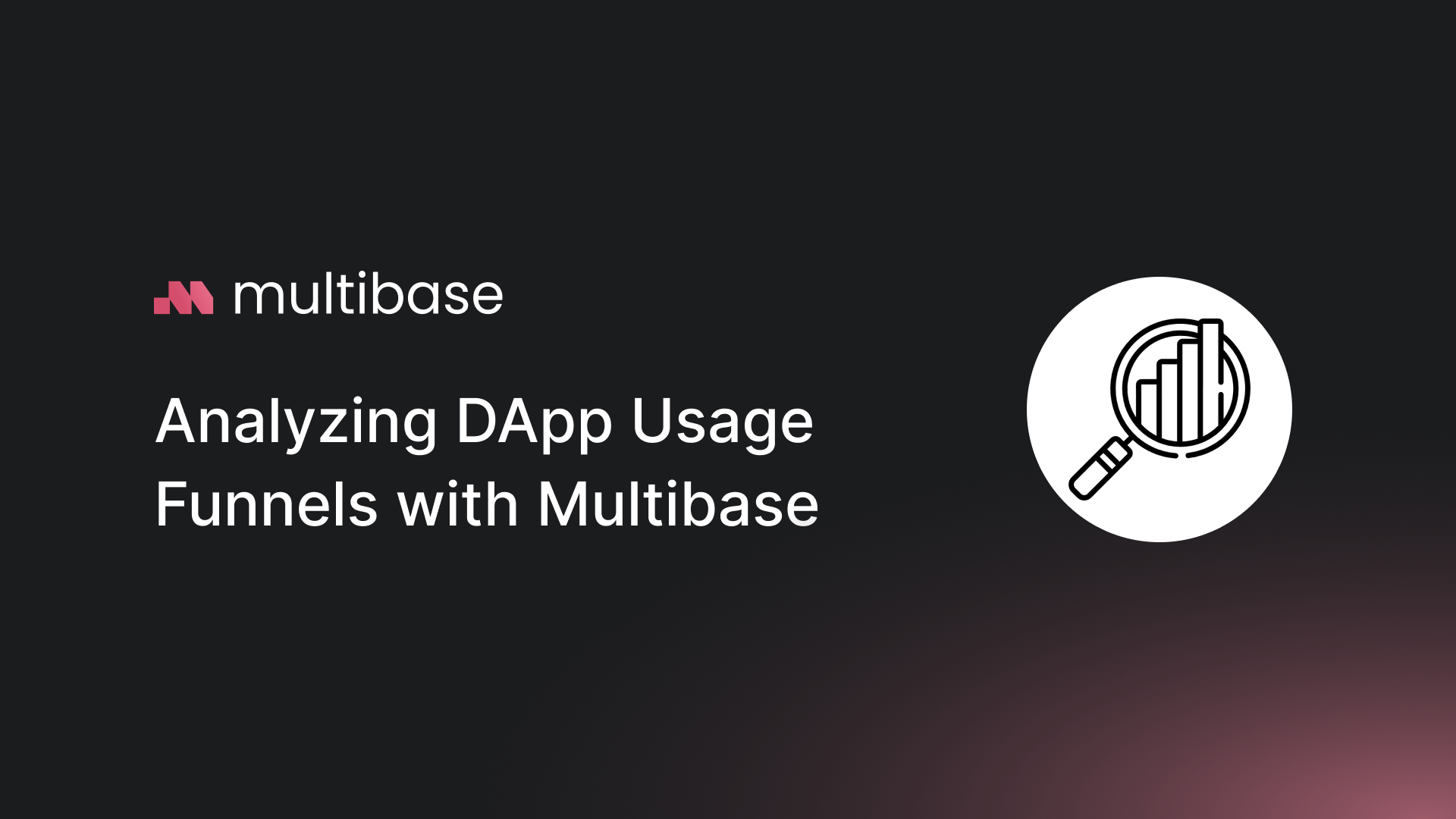Analyzing DApp Usage Funnels with Multibase
Understanding user behavior and optimizing usage funnels in evolving world of decentralized applications (DApps) is critical for success. Analyzing DApp usage funnels can provide valuable insights into user engagement, identify bottlenecks, and guide improvements in user experience. This article explores how to leverage Multibase's powerful analytics tools to analyze and optimize DApp usage funnels effectively.
Understanding DApp Usage Funnels
A DApp usage funnel represents the journey users take from their initial interaction with your decentralized application to becoming active, engaged users. Typical stages in a DApp usage funnel include:
1. Discovery: Users find your DApp through various channels such as Twitter or questing platforms.
2. Onboarding: Users connect their wallets and complete the initial onboarding process.
3. First Action: Users perform their first meaningful interaction within the DApp.
4. Repeated Usage: Users return and engage with the DApp on a regular basis.
5. Advanced Features: Users explore and engage with the more complex functionalities of your DApp.
6. Retention: Users become long-term, active participants in your DApp ecosystem.
Leveraging Multibase for DApp Funnel Analysis
Multibase offers several key features that make DApp usage funnel analysis efficient and insightful:
1. Integrated Data Analysis
Multibase consolidates onchain and offchain data to provide a holistic view of the user journey, from the initial interaction with your website, all the way to the ultimate onchain conversion event. This integrated approach is essential for understanding the complete user experience across your DApp.
2. Conversion Tracking
Identify your most effective user paths and track conversion rates between events with our Pathfinder query, including a granular view into how offchain actions lead to onchain conversions.
3. Conversion Tracking
Multibase's conversion tracking can help identify effective user paths and track conversion rates between different stages of the usage funnel. This can reveal bottlenecks and potential areas for product improvement.
4. Utilize Dashboard Tools
Leverage Multibase dashboards to cohort users based on their first interaction date and track their retention over time. This can help identify trends and inform retention strategies for your DApp.
How to Analyze DApp Usage Funnels with Multibase
1. Define Funnel Stages: Clearly outline the key stages in your DApp's usage funnel, from initial discovery to advanced feature usage.
2. Set Up Event Tracking: Use the Multibase JS SDK to track relevant events at each stage of the funnel, both onchain and offchain.
3. Create Custom Queries: Multibase's query builder can filter your data based on the defined stages of your funnel and track user progression.
4. Analyze Conversion Rates: Examine conversion rates between each stage of your funnel to identify bottlenecks and areas for improvement. From there you can investigate the potential causes of the bottlenecks and implement a plan of action to address them.
5. Segment Users: Use Multibase's user profiling to cohort users based on behavior, engagement levels, and demographics. Once placed into cohorts, you can analyze how different segments of users move through your funnel.
6. Visualize Funnel Data: Leverage Multibase historical graphs to create clear, actionable representations of your funnel data.
Best Practices for Optimizing DApp Usage Funnels
1. Simplify Onboarding: Streamline the wallet connection process and provide clear guidance for new users.
2. Educate Users: Offer tutorials, tips, and documentation to help users understand your DApp's features and value proposition.
3. Optimize Gas Fees: Implement gas optimization strategies to reduce transaction costs and improve the user experience.
4. Implement Progressive Disclosure: Introduce advanced features gradually to avoid overwhelming new users.
5. Personalize the User Experience: Use data insights derived from Multibase to tailor your DApp experience to different user segments.
6. Incentivize Progression: Offer rewards or unlock new features as users progress through the funnel to encourage deeper engagement.
7. Continuously Iterate: Regularly analyze funnel data and implement improvements based on insights gained.
Leveraging Funnel Analysis Insights
Once you've analyzed your DApp’s usage funnel with Multibase, you can use these insights to:
1. Improve the User Experience: Identify and address pain points in the user journey.
2. Optimize Marketing Strategies: Focus marketing efforts on stages where users are most likely to drop off.
3. Guide Product Development Cycles: Prioritize feature development based on user behavior and funnel performance.
4. Enhance User Retention: Develop strategies to keep users engaged at each stage of the funnel.
Conclusion
Analyzing DApp usage funnels is essential for optimizing the user experience, improving retention, and driving the overall success of your decentralized application. By leveraging Multibase's powerful analytics tools, you can reveal underlying insights into user behavior, identify bottlenecks, and continuously improve your DApp's performance.
A well-optimized usage funnel not only improves the user experience, but also contributes to the growth and sustainability of your DApp’s ecosystem. With Multibase, you're not just analyzing funnels – you're unlocking a wealth of insights that can drive informed decision-making and strategic planning.
By understanding and optimizing your DApp's usage funnel, you can build a strong and engaged user base that will support your project's growth and success.
